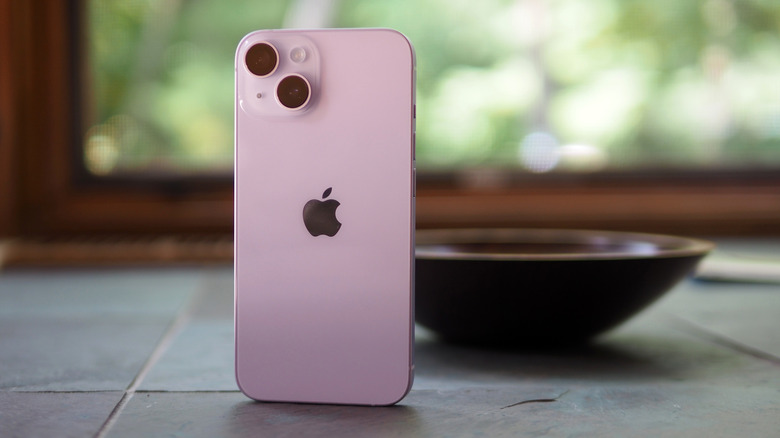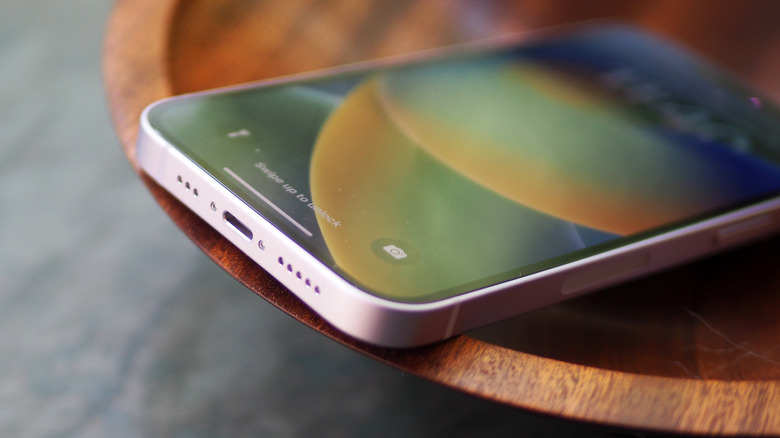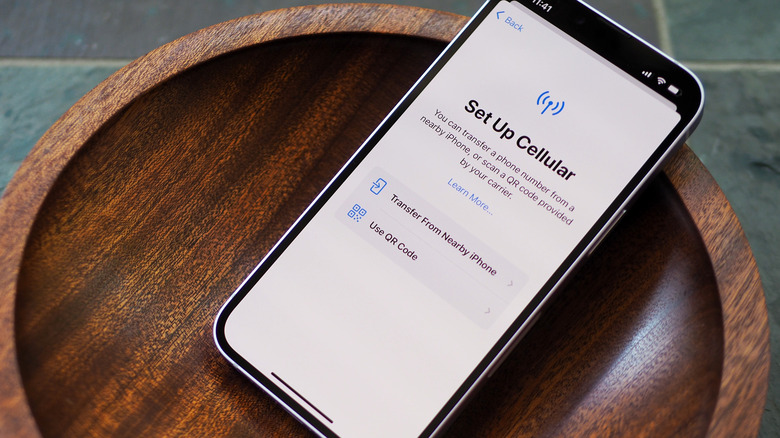New iPhone 14 eSIM Protip: Why You Should Wait To Transfer Your Number
The iPhone 14 and iPhone 14 Pro may do way with SIM cards in the U.S. in favor of eSIM, but there's a good reason why following Apple's instructions during setup of your brand new smartphone might not be such a good idea. Arguably the most controversial part of Apple's big iPhone announcement in September 2022 was the decision — for the U.S. market, at least — to ditch the physical SIM tray in favor of going eSIM only. It's a decision with pros and cons.
eSIM support isn't new to iPhone, and indeed the iPhone 13 series was capable of supporting two active eSIM accounts simultaneously. This year, though, there's no option for U.S. users to drop in a physical SIM card. Instead, the provisioning is done for a "virtual SIM" built into the phone. Some have criticized that for potentially limiting flexibility, since it leaves owners of the iPhone 14 series dependent on carriers which have embraced eSIM.
At the same time, there are some advantages to the switch. One of the biggest is security: now, a thief won't be able to remove the iPhone SIM card and deactivate location tracking, since the eSIM is a fundamental part of the phone. Arguments either way are unlikely to be settled any time soon, but if you're setting up a new iPhone 14, iPhone 14 Pro, or iPhone 14 Pro Max in the next few days, there's something you might want to bear in mind.
eSIM switching is quick but an iPhone restore isn't
The transfer process from an existing iPhone is actually relatively straightforward, just as long as you're running iOS 16.0.1, which fixes an activation error Apple conceded some users were encountering. When it's working as it should — as we found in our own iPhone 14 review — it takes just a couple of minutes to transfer an account from one iPhone to the other, regardless of whether you're moving from a physical SIM card or an eSIM.
Problem is, the rest of the iPhone setup process just isn't as quick, if you're restoring your new iPhone 14 from a backup. Whether wired — from a Mac or PC — or via iCloud, that process can take a long time as photos, videos, apps, and other data are restored. Since iOS 16 prompts you to transfer your eSIM before that point, it means your cellphone number and data connection are effectively trapped on the new iPhone as it slowly restores.
You can actually wait to set up eSIM
With a physical SIM, of course, you could just remove it and put it back in your old phone while you wait. Considering restoring from a backup can take up to several hours, depending on how much data you're transferring, that's a long time. Switching physical cards just isn't possible with an iPhone 14 in the U.S. though. However, there's a way to hold off transferring to iPhone 14 eSIM and still set up your new device.
iOS 16 offers the ability to pause the eSIM activation, and still go through the rest of the iPhone setup. That way, you can make sure all your data is transferred properly, and only then go into Settings to run through the (very simple) eSIM process. If you're setting up a brand new iPhone 14 from scratch this won't be an issue, but those upgrading from an earlier version of Apple's smartphone may want to divert from the way the Cupertino company would prefer you to set things up in order to maintain maximum flexibility.


